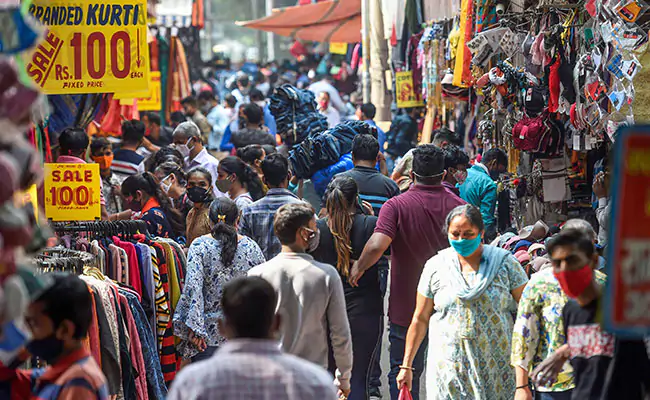On Sunday, Delhi recorded 517 new covid cases, up nearly fourfold from 131 at the start of the month. The figure in Haryana has climbed fourfold since Sunday, though it is still lower than in Delhi. Active cases in the country have begun to climb again for the first time since the third week of January. The increase in magnitude is still quite minor, but the upward trend has already lasted four days.

The spike in infections in Delhi and Haryana has sounded alarm bells once again, just when the pandemic appeared to be ending in India. The silver lining, for the time being, is that the increase in instances has been limited to these two states, namely Delhi and its environs, with no reports from other areas of the nation.
Unlike other large cities like as Mumbai, Bengaluru, Chennai, or Pune, where the number of daily new cases has declined to the low double digits, Delhi has continued to report much more cases, averaging over 100 per day. However, there has been a noticeable increase in the previous several days. For the first time in a month, Delhi saw more than 200 new cases on Tuesday. The number of cases has continued to grow every day since then, reaching 461 on Saturday, the highest number in six weeks. On Saturday, Haryana had the highest number of cases in five weeks, at 202. On Saturday, these two states accounted for more than half of India’s total cases.
The causes of the growing numbers in Delhi and Haryana are now unknown, but the most likely explanation is that it is due to the repeal of the mask requirement and the removal of all restrictions. These actions are not exclusive to Delhi or Haryana, and they have been removed across the nation, but Anurag Agrawal, former head of the Delhi-based Institute of Genetics and Integrative Biology (IGIB), pointed out that the patterns emerge first in big cities. According to Agrawal, the present increase in Delhi is in line with what would be expected if individuals stopped wearing masks and interacted more freely.
Schools and workplaces have reopened, travel has resumed, and most companies have resumed full operations. It’s not unexpected that the number of instances has grown as a result of increasing interactions and fewer constraints.
The increase in Delhi is not due to the introduction of a new strain of the virus, and it does not appear to be a major worry at this time. The numbers aren’t projected to rise much since the two elements that produce a spike — the introduction of a fast-transmitting variation and the availability of a big pool in a vulnerable population — haven’t changed enough. As a result, the increase is expected to be brief and moderate.
While the number of active cases at the national level has increased in recent days, the number of new cases detected has stayed relatively constant. Although the 1,150 new cases discovered on Saturday were much higher than the 949 and 975 instances discovered the two previous days, it is too early to draw any conclusions about a pattern. The seven-day moving average of new cases continues to fall, masking daily volatility and presenting a more constant pattern.
Currently, over ten states and union territories are reporting instances in the single digits, with several of them reporting no incidents at all.
The number of cases in the United States is still at its lowest point in the previous two years. Positivity rates are going down consistently.
The increase in cases in Delhi and Haryana has rekindled worries that the country is entering a fourth wave. However, predicting anything about a new wave of illnesses is risky. The virus’s development is a fully random and unpredictable process. And it appears that a new wave of infections in India will be triggered only by the development of a new variation at this time. This is mostly due to the fact that the majority of India’s population has already been infected with the Omicron strain, and the population is believed to have developed some immunity to it. Reinfection with the same variation is not uncommon, although it is not common.
It’s unclear how long the immunity developed from a previous illness will last. It’s expected to continue at least six to nine months, according to current estimates. This is also the reason for the nine-month delay in delivering vaccination booster doses. That means that most patients infected with the Omicron type during the third wave would have effective protection for at least a few months longer. As a result, fears that this marks the start of the fourth wave may be unfounded for the time being. Unless a new harmful variation is discovered in the population, of course.
